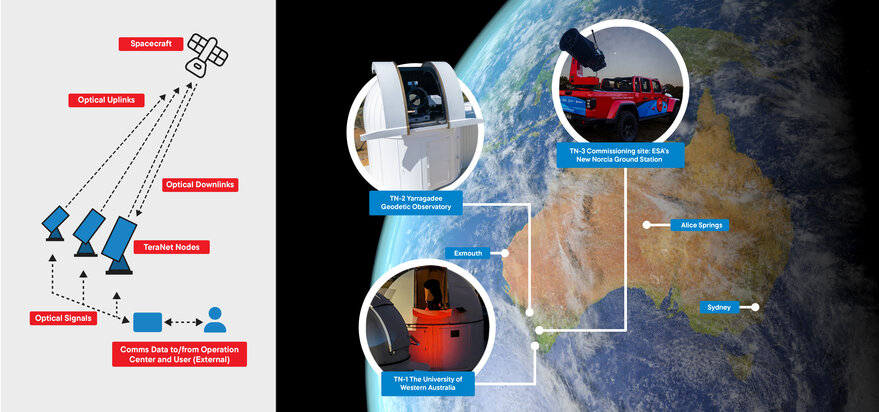SYDNEY, Australia – The University of Western Australia (UWA) announced the completion Oct. 2 of TeraNet, which it calls “the first operational optical ground station network in the Southern Hemisphere.”
“TeraNet demonstrates the innovation and impact that results from investing in science and technology,” Enrico Palermo, Australian Space Agency head, said in a statement released at the International Astronautical Congress here. “This network will enhance our ability to connect with spacecraft and future lunar missions, reinforcing Australia’s reputation as a trusted and capable partner in the global space sector.”
TeraNet is comprised of three interconnected optical ground stations:
TN-1 at UWA’s Perth campus is designed for communications with spacecraft in deep-space, including commercial moon missions.
TN-2, which was completed in September, is located at the Yarragadee Geodetic Observatory, 300 kilometers north of Perth. This site features “coherent optical technology and adaptive optics system,” according to the news release.
And TN-3, is a mobile optical ground station, designed for rapid deployment in disaster-affected regions.
“The completion of TeraNet is a transformational milestone,” professor Sascha Schediwy of UWA’s International Centre for Radio Astronomy Research, said in a statement. “It is the first time the Southern Hemisphere has an operational optical ground station network. By combining permanent facilities with a fully mobile node, we have created a globally unique platform that strengthens international space communications and enhances Australia’s sovereign capability in geodesy, satellite positioning, and national security.”
Related

